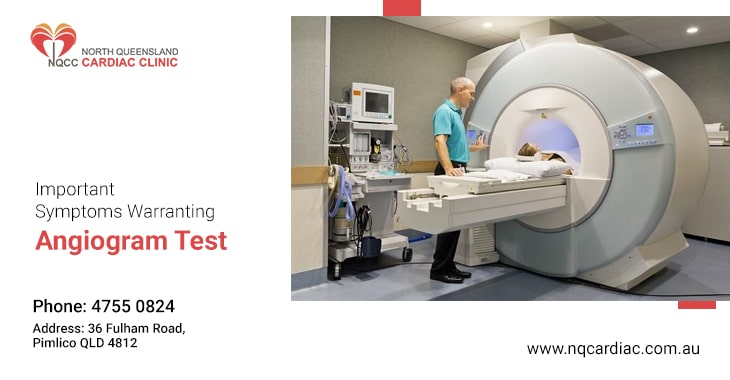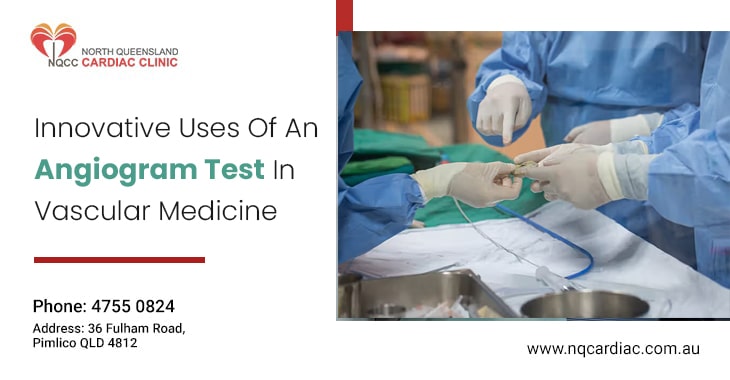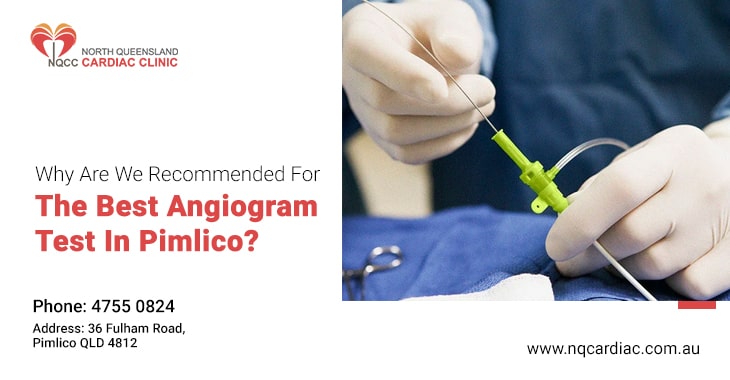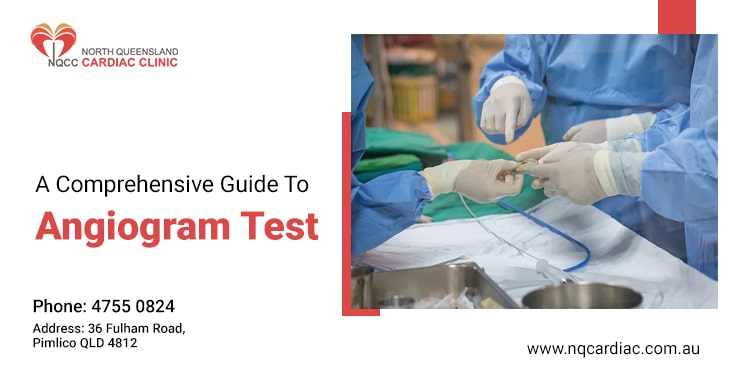A medical imaging process called an Angiogram Test, also known as an angiography or an arteriogram, employs X-ray equipment to see blood vessels in various places of the body. It is an important diagnostic tool for identifying blockages, narrowing, and other anomalies in the blood arteries. There are many vital warning signs indicating an angiogram test. If you face any signs, head to North Queensland Cardiac Clinic in Pimlico, Australia, for the Best Angiogram Test In Pimlico.
North Queensland Cardiac Clinic has expert cardiologists, Dr Dharmesh Anand and Dr Raibhan Yadav and other professionals who can conduct an accurate and safe Angiogram Test. When searching for the Best Angiogram Test Near Me, visit NQCC today. This blog will explore the important symptoms that may warrant an Angiogram Test.
Let’s dive in:-
- Chest Pain or Discomfort
- Shortness of Breath
- Unexplained Fatigue or Weakness
- Leg Pain and Swelling
- Sudden Onset of Severe Headache
- Abdominal Pain or Digestive Issues
- High Blood Pressure
- Irregular Heartbeat or Palpitations
Chest Pain or Discomfort:
Chest pain or discomfort is one of the most frequent symptoms that may call for an Angiogram Test, especially if it is severe, lasts for a long time, or happens while exercising. Such discomfort may indicate coronary artery disease, characterized by narrowing or blockage of the blood arteries supplying the heart muscle.
Shortness of Breath:
It may indicate a problem with the blood arteries providing oxygen-rich blood to the heart or lungs if you feel recurrent shortness of breath, especially during physical activity or at rest. An angiography can assist in finding any anomalies in these vessels and direct actions to have the blood flowing normally again.
Unexplained Fatigue or Weakness:
Extreme exhaustion or weakness that doesn’t seem to have a cause could be a sign of obstructed or restricted arteries. These arteries would reduce blood flow. An angiography can reveal information about the condition of the blood vessels, which can help identify the underlying source of these symptoms.
Leg Pain and Swelling:
Peripheral artery disease (PAD), when blood channels outside the heart become narrow or obstructed, may be associated with pain, cramps, or leg swelling. An Angiogram Test can diagnose PAD and view the blood arteries in the legs, enabling the administration of the proper medications to restore circulation and reduce symptoms.
Sudden Onset of Severe Headache:
A sudden, intense headache may occasionally indicate a cerebral vascular problem, such as an arteriovenous malformation (AVM) or an aneurysm. Angiography of the brain can help in diagnosing these potentially dangerous diseases.
Abdominal Pain or Digestive Issues:
Consistent stomach pain, especially after eating, maybe a sign that the blood supply to the abdominal organs is compromised. An angiography can find any obstructions or anomalies in the blood vessels supplying these organs, such as the liver or intestines.
High Blood Pressure:
Uncontrolled high blood pressure over time can harm blood arteries, resulting in disorders like renal artery stenosis or aortic aneurysms. An Angiogram Test can show the blood arteries affected by hypertension.
Irregular Heartbeat or Palpitations:
Arrhythmias brought on by irregularities in blood vessels may be associated with an irregular heartbeat or palpitations. Medical specialists can see the blood arteries surrounding the heart and assess if they are a factor in heart rhythm problems by doing an angiography.
End Note
In order to discover various vascular diseases early, make an accurate diagnosis. Choose the best course of therapy. It is crucial to recognize the symptoms that call for an Angiogram Test. Seeking immediate medical attention if you exhibit any of the aforementioned symptoms is critical. Contact North Queensland Cardiac Clinic in Pimlico, Australia, for the Best Angiogram Test In Pimlico.





Recent Comments